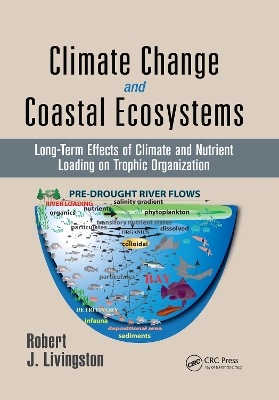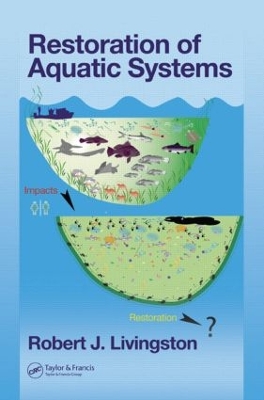CRC Marine Science
1 primary work • 4 total works
Book 35
Produced by a Leading Aquatic Scientist
A narrative account of how estuaries around the world are being altered by human forces and human-induced global climate changes, Climate Change and Coastal Ecosystems: Long-Term Effects of Climate and Nutrient Loading on Trophic Organization chronicles a more than 40-year-old research effort conducted by Dr. Robert J. Livingston and his research team at Florida State University. Designed to evaluate system-level responses to natural and anthropogenic nutrient loading and long-term climate changes, the study focused on the northeast Gulf of Mexico river–bay systems, and concentrated on phytoplankton/benthic macrophyte productivity and associated food web organization. It addressed the changes of food web structure relative to long-term trends of climatological conditions, and was carried out using a combination of field-descriptive and experimental approaches.
Details Climate Change, Climate Change Effects, and Eutrophication
This book includes comparative analyses of how the trophic organization of different river–bay ecosystems responded to variations of both anthropogenic impacts and natural driving factors in space and time. It incorporates a climate database and evaluates the effects of climate change in the region. It also provides insights into the effects of nutrient loading and climate on the trophic organization of coastal systems in other global regions.
- Presents research compiled from consistent field sampling methods and detailed taxonomic identifications over an extended period of study
- Includes the methods and materials that the research team used to access the health and trophic organization of Florida’s estuaries
- Provides an up-to-date bibliography of estuarine publications and reports
Based on a longitudinal study of anthropogenic and natural driving factors on river-estuarine systems in the northeast Gulf of Mexico, Climate Change and Coastal Ecosystems: Long-Term Effects of Climate and Nutrient Loading on Trophic Organization is useful as a reference for researchers working on riverine, estuarine, and coastal marine systems.
Simplistic thinking would have us believe that by eliminating the loading of a given pollutant, an aquatic system will revert to its previous pristine state. This premise is without scientific verification. Besides the fact that typically very little documentation exists defining what exactly that previous pristine state was, it should be noted that biological processes are non-linear. They reflect adaptations by populations and corresponding responses of trophic organization that are not predictable by linear models of recovery.
Restoration of Aquatic Systems makes a clear delineation between genuine restoration and public perception of restoration efforts. Written by Robert Livingston, one of the foremost international authorities on ecosystem studies of freshwater, estuarine, and marine environments, this work is the final volume of a trilogy derived from 70 field-years of data garnered from 10 different coastal systems on the Atlantic and Gulf coasts. The text provides a synthetic look at the restoration of aquatic systems, emphasizing the functional basis that supports such activities, followed by a review of the evidence of recovery.
Livingston considers numerous cases of scientific restoration; however, while the first two volumes could be considered pure science, this volume brings into play the impact of political as well as economic interests and where appropriate, media leverage. This work is thus concerned with just how effective the restoration process becomes as a product of a complex mixture of competing interests.
From this effort, an interdisciplinary comparative database has been created that is currently being published in a series of books and peer-reviewed scientific journals. This work is used to evaluate system-level processes that determine the effects of nutrient loading and nutrient dynamics on phytoplankton/benthic macrophyte productivity and associated food web responses.
A multidisciplinary team of marine scientists, chemists, physical oceanographers, geologists, hydrologists, engineers, experimental biologists, and taxonomists have created a singular database of changes in a series of Gulf of Mexico coastal systems. This field information, together with field and laboratory experimentation, is integrated with the scientific literature to advance our understanding of how coastal food webs work. The central focus is on the relationship of primary production in the form of species-specific phytoplankton communities with associated food webs of coastal systems and the relationship of tropho-dynamic processes to long-term changes (natural and polluted) in such areas. The impacts of phytoplankton blooms on trophic organization is elucidated.
The author, a renowned marine scientist, provides detailed knowledge of the processes that drive coastal ecosystems. He presents an in-depth discussion of a hierarchy of cyclical periods associated with the formation and development of aquatic food webs. Trophic Organization in Coastal Systems will be particularly useful to those involved in research related to the importance of aquatic food webs to an understanding of how aquatic systems function. The principles and processes of trophic organization presented here can serve as a valuable model for research in other regions of the world.



